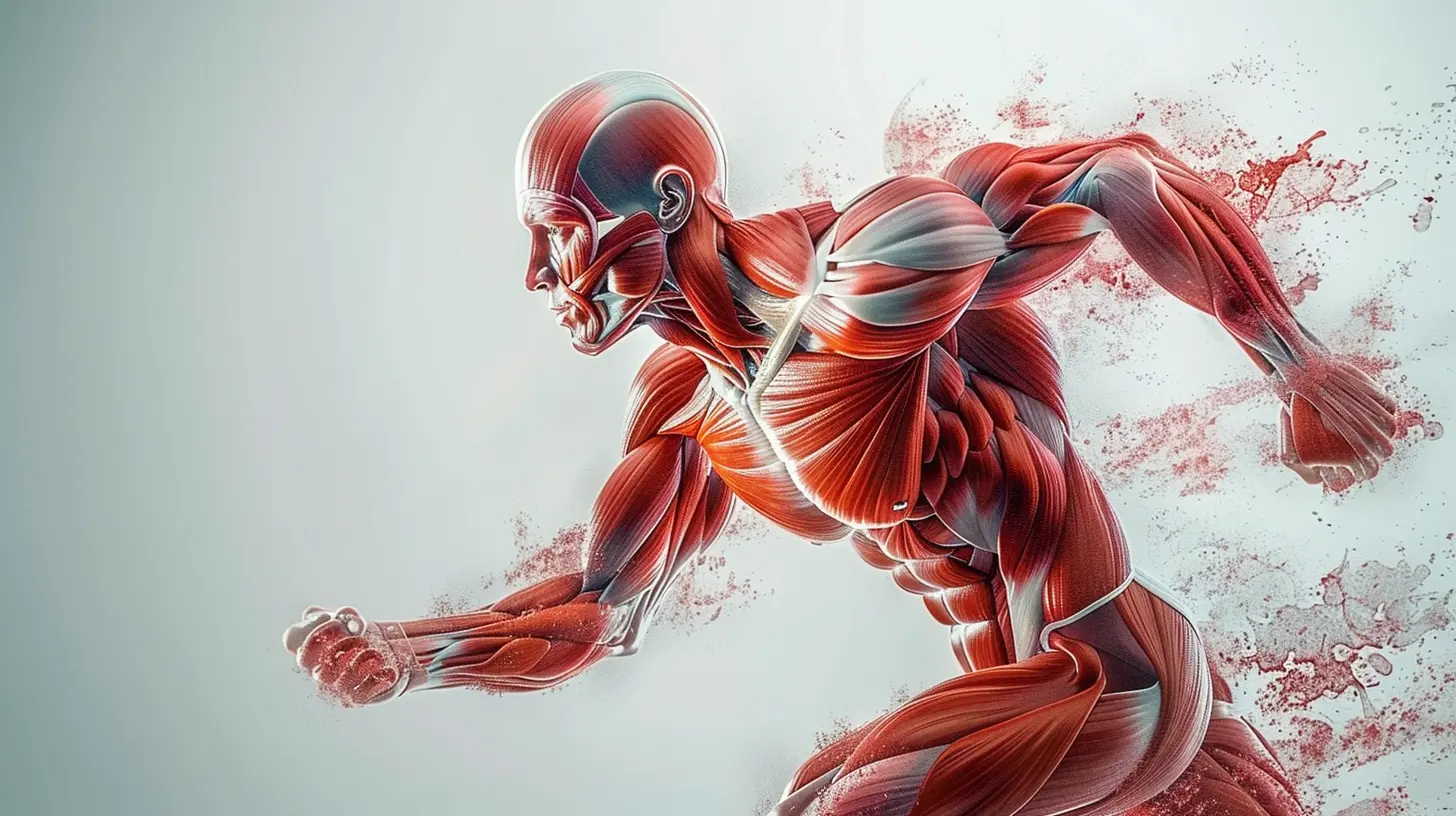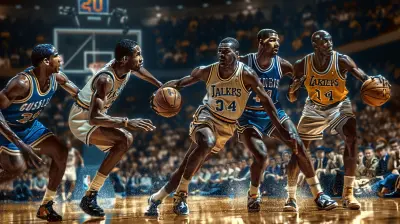How Muscle Fibers Determine Athletic Potential: Fast-Twitch vs. Slow-Twitch
6 October 2025
When we talk about athletic performance, we often focus on training, diet, or motivation. But there's something even more fundamental that plays a massive role in your physical ability—the type of muscle fibers you have. Yep, your genetic blueprint is silently powering (or limiting) your speed, power, and endurance.
You’ve probably heard terms like “fast-twitch” and “slow-twitch” tossed around in sports circles, right? But what do they actually mean? And more importantly, how do they affect your athletic potential? Whether you’re sprinting down a track or grinding out miles on a bike, the type of muscle fibers you have can make a world of difference.
So, let’s break it down in a simple, easy-to-understand way. We’re going deep into the world of muscle fibers—no lab coat required.
What Are Muscle Fibers, Anyway?
Before diving into the different types, let’s answer a basic question: what is a muscle fiber?Muscle fibers are the individual cells that make up your muscles. Think of them as tiny engines inside your body, responsible for generating force and movement. Whether you're shooting hoops or lifting a grocery bag, it’s your muscle fibers doing all the heavy lifting (literally!).
There are two main types of these fibers:
- Slow-twitch (Type I) fibers
- Fast-twitch (Type II) fibers
And yes, each has its own strength—literally and figuratively.
Slow-Twitch (Type I) Muscle Fibers: Built for the Long Haul
Let’s start with slow-twitch fibers. These are your go-to buddies for endurance activities.Characteristics
- High endurance- Fatigue-resistant
- Use oxygen efficiently
- Fire slowly, but can go forever
Picture a marathon runner, grinding out 26.2 miles. That’s your slow-twitch fibers at work—pacing, steady, and reliable. They’re fueled mostly by oxygen, which makes them great for aerobic activities like long-distance running, swimming, or cycling.
Best-Suited Sports
- Long-distance running- Triathlons
- Rowing
- Cross-country skiing
So if you’re someone who enjoys pacing yourself and going the distance, congratulations—your slow-twitch fibers are your superpower.
Fast-Twitch (Type II) Muscle Fibers: The Sprinters of the Muscle World
Now let’s talk about the firecrackers: fast-twitch fibers.Characteristics
- Explosive power- Burn out quickly
- Don’t rely on oxygen
- Fire quickly and forcefully
Fast-twitch fibers come in two subtypes (Type IIa and Type IIb), but for simplicity’s sake, just know they’re the ones that give you that boom. Whether you're sprinting 100 meters or jumping for a slam dunk, these fibers are your MVPs.
Best-Suited Sports
- Sprinting- Weightlifting
- Basketball
- Football
- High Jump
If you’ve ever wondered how sprinters explode off the blocks or why powerlifters can hoist ridiculous amounts of weight—it’s mostly because of fast-twitch dominance.
The Genetic Lottery: Can You Change Your Fiber Type?
Alright, here's where it gets interesting. You might be asking: “Can I train my muscles to be more like one type or the other?”Short answer? Kind of, but not entirely.
You're born with a certain ratio of fast- to slow-twitch fibers, and that ratio doesn’t change drastically. Think of it like your hair color—sure, you can dye it, but underneath, it’s still what you were born with.
What Training Can Do
- Improve performance of existing fibers(Fast-twitch can get stronger, slow-twitch can get more efficient)
- Type IIa fibers can adapt
(These are the most trainable and can take on some endurance or power characteristics depending on how you train)
But no matter how hard you train, someone with a natural fast-twitch dominance will likely out-sprint you, and a genetically slow-twitch athlete will probably outlast you in long-distance races.
So yeah, genetics play a huge role. But that doesn’t mean you’re stuck. It just means you need to train smart and play to your strengths.
How to Identify Your Muscle Fiber Type
Unless you're up for a muscle biopsy (shoving a needle into your muscle to extract tissue—ouch!), there’s no 100% way to know your exact fiber ratio. But you can make a good guess through performance testing.Try This Simple Test
1. Choose a heavy weight you can lift about 10 times max (think near failure on the 10th rep).2. Rest for about 60 seconds.
3. Do as many reps as you can for the second set.
If you can only do ~5 reps, you’re likely fast-twitch dominant.
If you can crank out 10+ reps again, slow-twitch is your likely strength.
Another clue: your athletic past. If you’ve always excelled at short bursts of speed or power, chances are you’re fast-twitch heavy. If you’ve always had stamina for days? Slow-twitch might be your best friend.
Why This Matters for Athletes
Understanding your dominant muscle type isn’t just trivia—it can seriously impact how you train, recover, and perform.Tailor Your Training
- Fast-Twitch Dominant? Focus on explosive movements, quick sprints, and heavy lifting with longer rest periods.- Slow-Twitch Dominant? Endurance training, higher reps, shorter rest, and steady-state cardio will feel more natural.
Optimize Recovery
Fast-twitch fibers fatigue faster and take longer to recover. If you’re always feeling drained after high-intensity workouts, you might be overtraining your speedy fibers.Slow-twitch folks can often handle more frequent training due to better fatigue resistance.
Play to Your Strengths
If you’re fast-twitch dominant, maybe chasing a marathon PR isn’t your calling. And if you’re slow-twitch driven, perhaps you’re not destined for Olympic-level powerlifting—and that’s totally okay.Instead of fighting your genetics, why not work with them? You’ll be amazed at what you can achieve when you align your training with your natural potential.
Can You "Hack" Your Muscle Fibers?
Here’s where things get spicy. Some athletes and coaches claim you can hack your muscle fiber ratio through certain training protocols.While science doesn’t fully support drastic transformations, there are a few methods that can enhance what you’ve got:
Sprint Interval Training
This can improve your fast-twitch fiber performance, even if you’re slow-twitch dominant.Resistance Training
Heavy lifting (low reps, high weight) helps maximize your fast-twitch potential.Endurance Work
High-rep, low-weight lifting and long cardio sessions can fine-tune your slow-twitch fibers.That said, results vary based on your genetics, age, and training history. Your best bet? Mix it up and see what your body responds to.
Real-World Examples: Athletes and Muscle Fibers
Usain Bolt
The fastest man alive? Definitely fast-twitch dominant. Just watch the way he explodes off the blocks—pure power.Mo Farah
One of the greatest distance runners ever. His body is a temple of slow-twitch dominance—his pacing and stamina are off the charts.Serena Williams
Known for her powerful serves and explosive court movement—yep, fast-twitch likely reigns supreme here.Your favorite athletes didn’t just work hard—they worked smart. They figured out their strengths and trained accordingly.
So, What Should You Do?
If you’re an athlete (or aspiring to be one), here’s a quick action plan:1. Figure out your fiber type
Use performance clues or basic testing to get an idea.
2. Train accordingly
Cater your strength and conditioning routine to your dominant muscle type.
3. Don't ignore the other side
Even if you're fast-twitch dominant, some endurance work helps. And vice versa.
4. Listen to your body
It’s always sending signals—fatigue, soreness, performance dips. Adjust as needed.
5. Stay consistent
Genetics might give you a head start, but effort takes you across the finish line.
Final Thoughts
Your muscle fiber composition is like your athletic fingerprint—totally unique and deeply rooted in your DNA. While you can’t completely change what nature gave you, you can absolutely maximize it.Fast-twitch or slow-twitch, you’ve got potential waiting to be unlocked. So next time you hit the gym, lace up for a run, or jump into a game, remember—it’s not just willpower or work ethic shaping your performance.
It’s also the quiet power of muscle fibers doing their thing behind the scenes.
Now go out there and crush it—whatever your style.
all images in this post were generated using AI tools
Category:
Sports ScienceAuthor:

Nelson Bryant
Discussion
rate this article
1 comments
Lillian Snyder
Great read! Understanding muscle fibers really helps us train smarter!
October 16, 2025 at 4:19 AM

Nelson Bryant
Thank you! I'm glad you found it helpful! Understanding muscle fibers indeed plays a key role in optimizing training.


